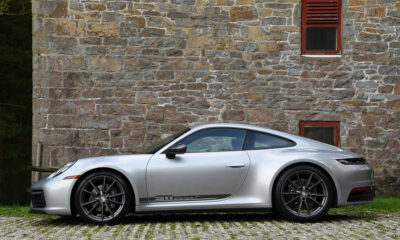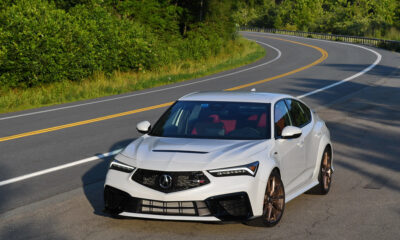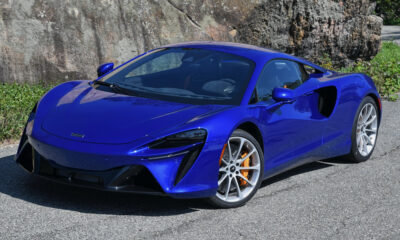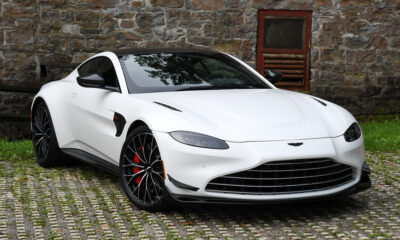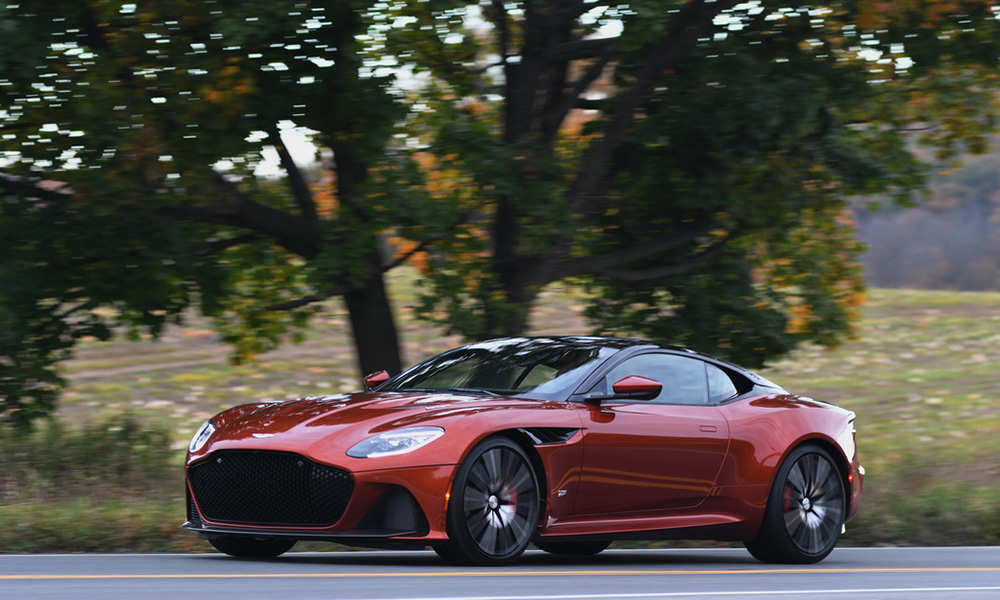
Photo: David Haueter
Most people who aren’t necessarily car people associate Aston Martin with being the kind of car that James Bond drives, as Aston Martin models have appeared in seven Bond films since 1964 when the DB5 was one of Sean Connery’s secret weapons in Goldfinger.
The latest Bond film, No Time to Die, has appearances from four different Aston Martin models, including the DBS you see here.
Aston Martin will be forever linked to James Bond, but for us racing enthusiasts the name also brings to mind the marques involvement on the track, most recently in Formula 1 as well as in sports car racing with the Vantage GT3 and GT4 models.
The DBS doesn’t have a racing version, but it may be the model that best represents the traditional Aston Martin values of blending performance and luxury.
There are five models in the Aston Martin lineup, with the DBS at the top of what could be called the ‘normal’ models, which include the DBX SUV and the Vantage, DB11 and DBS cars.
The only model above the DBS in the Aston hierarchy is the super-exclusive Valkyrie, which has 1,140 hp and will only have 150 produced.
It may not have over 1,000 hp like the Valkyrie, but the DBS puts up some serious numbers of its own.
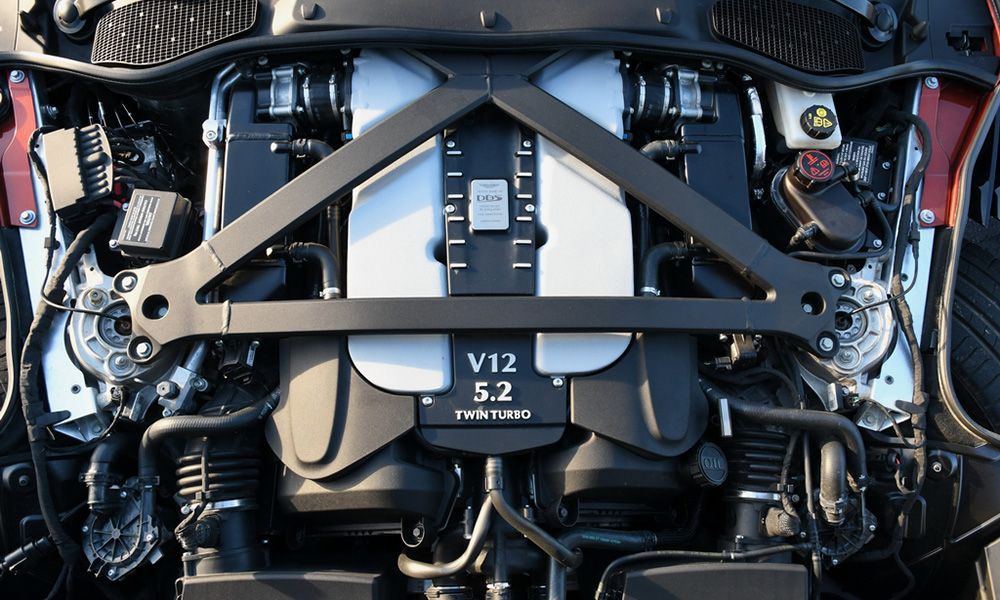
Photo: David Haueter
The 5.2-liter twin-turbocharged V12 under its hood produces 715 hp and 663 lb.-ft. of torque, which is on tap from 1,800-5,000 rpm. That prodigious power output is significantly more than the DB11 (528 hp) and Vantage (503 hp) models and can take this two-ton plus car to 60 mph in 3.4 seconds.
Given enough room, it can hit a top speed of 211 mph.
The DBS also has the kind of supporting hardware you would expect for a 715-hp car, with huge carbon ceramic brakes, dynamic torque vectoring, electronic brakeforce distribution and a limited slip differential.
A double-wishbone suspension up front and a multilink setup at the rear are carried over from the DB11, but the track has been widened by 10 mm at the front and 20 mm at the rear to improve handling, along with a larger anti-roll bar.
An 8-speed automatic that is rear-mid mounted (that allows the car to have a weight distribution of 51/49 front to rear) is the only transmission.
Aston Martin has always made beautiful cars, but in my opinion the DBS is the best-looking car in the entire lineup. It manages to look menacing and elegant at the same time, with that traditional Aston grill and a taut body with aggressively wide fenders.
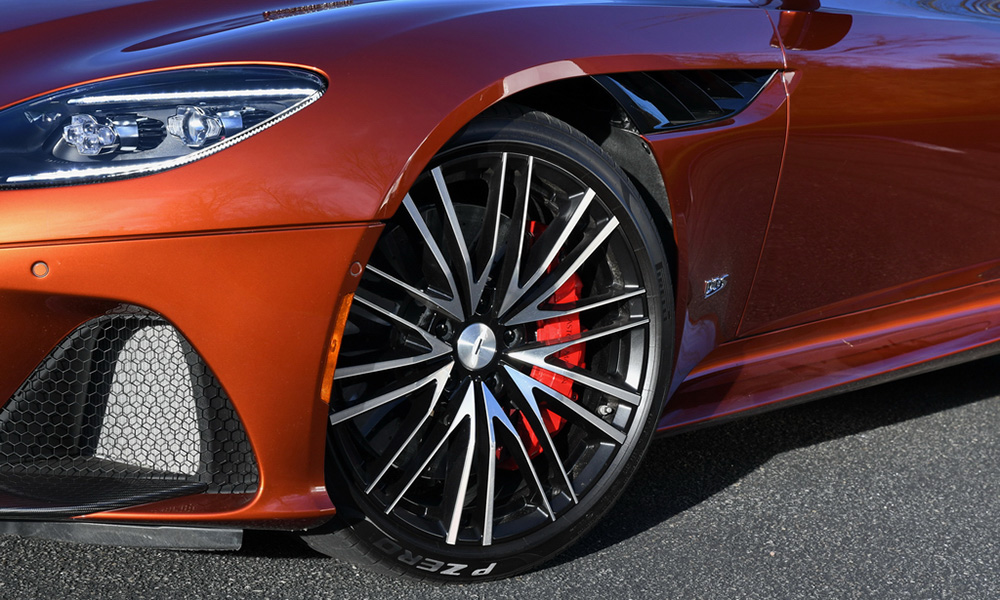
Photo: David Haueter
There are some racy elements to the body as well, with carbon fiber used for the hood, trunk, front splitter and rear diffuser. It’s a car that you’ll look back at every time you walk away from it.
There are also some interesting aerodynamic design elements on the DBS. There are air vents behind the rear windows that carry air through the trunk lid and out through an opening on the trunk to improve downforce. The unique front strakes on the front fenders draw air from the front wheel arches to reduce lift and improve high-speed stability.
Inside, the DBS is rich with the smell and feel of high-quality leather but the impression that you get is less impressive than the feeling the outside of the car gives you.
Everything works well enough, but it feels pretty ordinary for a car that has a sticker price of over $300,000 and the controls are not as intuitive as much more mainstream cars like the BMW 8 Series.
The back seats are best used for storage rather than humans, but the front seats are supportive and comfortable. The DBS is also as easy to get in and out of as any other sports coupe, which is appreciated.
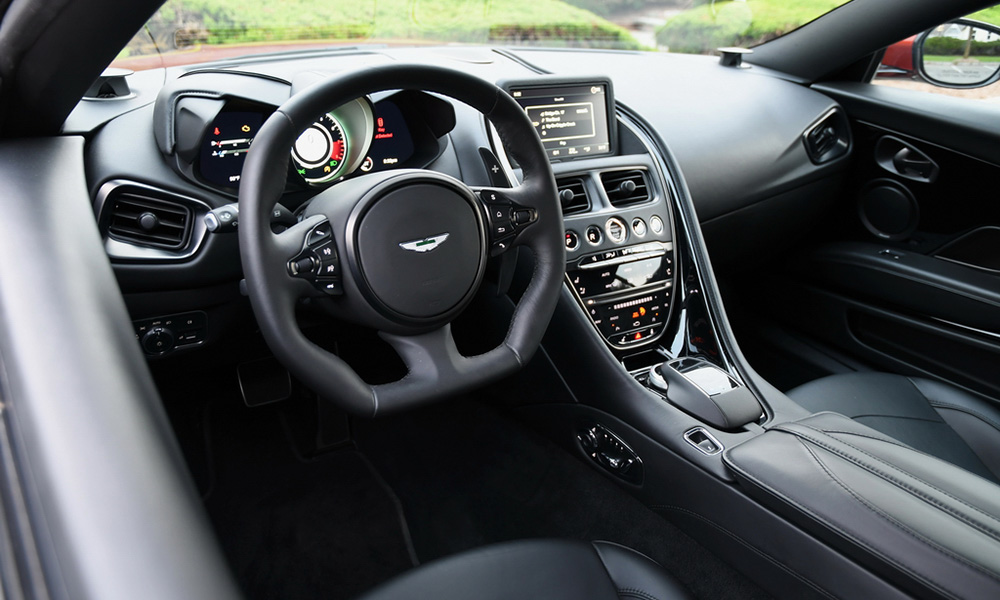
Photo: David Haueter
One really quirky feature on this car is the hood release process. Instead of pulling a handle to open the hood like almost every other car, you have to pull wire loops on each side of the DBS under the dash to release the hood catches before you can lift the hood.
They’re not nicely finished straps you pull, but literally two wire loops that also seem like they could break easily. Oddly, the hood is self-closing – you just close it gently and little motors pull it the rest of the way shut.
Driving the DBS is a great automotive experience. The car is wickedly fast when you open up the taps and the sound from the V12 when you’re hard on the throttle is fantastic.
It’s supercar fast, but the cool thing about the DBS is that its also just as easy to drive every day as your typical Audi, BMW or Mercedes sports coupe.
The brakes have the stopping power to handle all that horsepower pushing all that weight, and the transmission works well with the engine, though gear shifts can sometimes feel a bit abrupt even in GT mode.
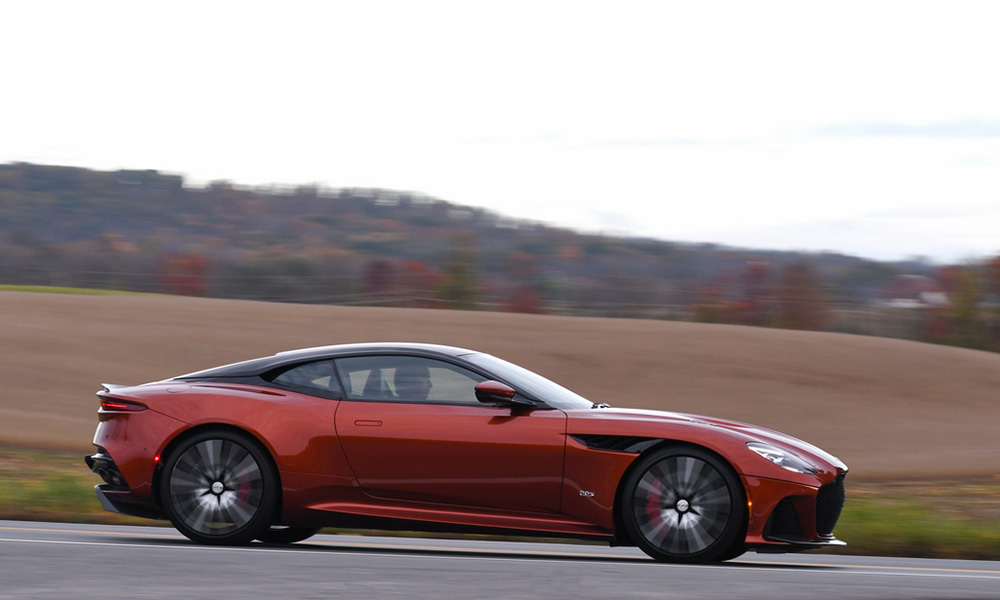
Photo: David Haueter
The DBS has a comfortable and nicely controlled ride in GT mode, which softens up the suspension for daily driving, but put it in Sport mode and the handling is precise and well-balanced, even with that big heavy engine out in front.
There’s also a Sport+ mode that firms things up more, but it’s a bit too jiggly for all but the smoothest roads. The steering is a bit on the heavy side but has decent feedback and communication.
With an MSRP of $316,300, the DBS competes head-to-head in price and performance with cars as varied as the Ferrari 812 Superfast and the Bentley Continental GT.
It may not have the brand cache of the Ferrari, but the DBS is more user-friendly, has a more attractive design and is just as exclusive.
It also has the luxury to go head-to-head with the Bentley but is more exciting to look at and drive. With it’s blend of beautiful design, performance and user-friendliness, the DBS may just be the best all-around luxury GT car on the market if you can afford it.
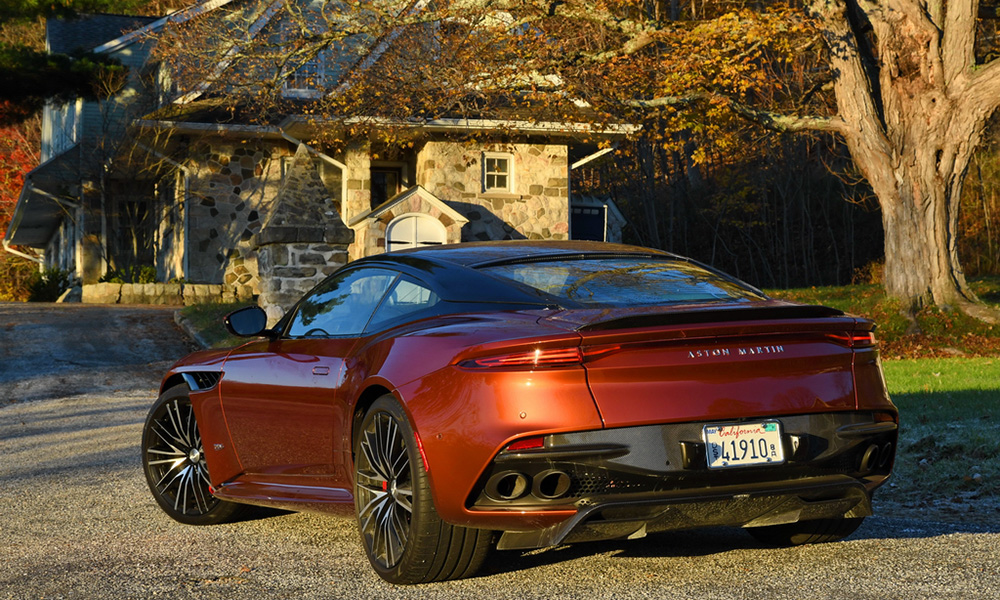
Photo: David Haueter



















